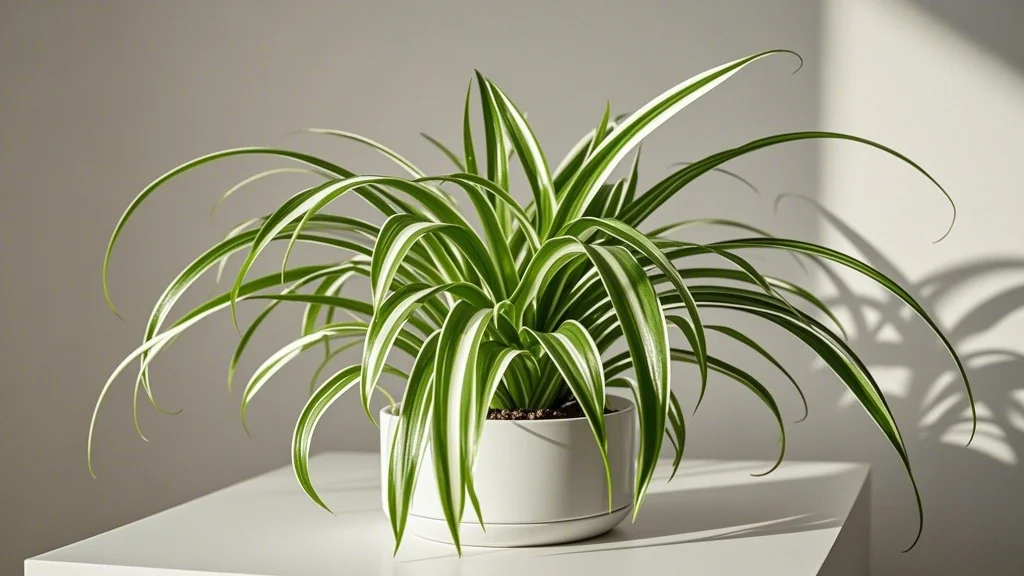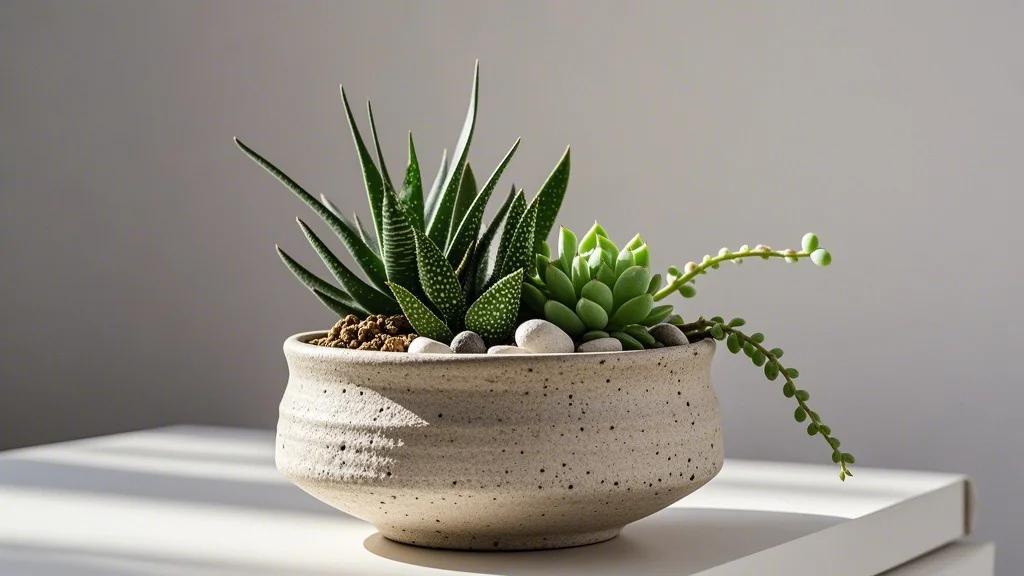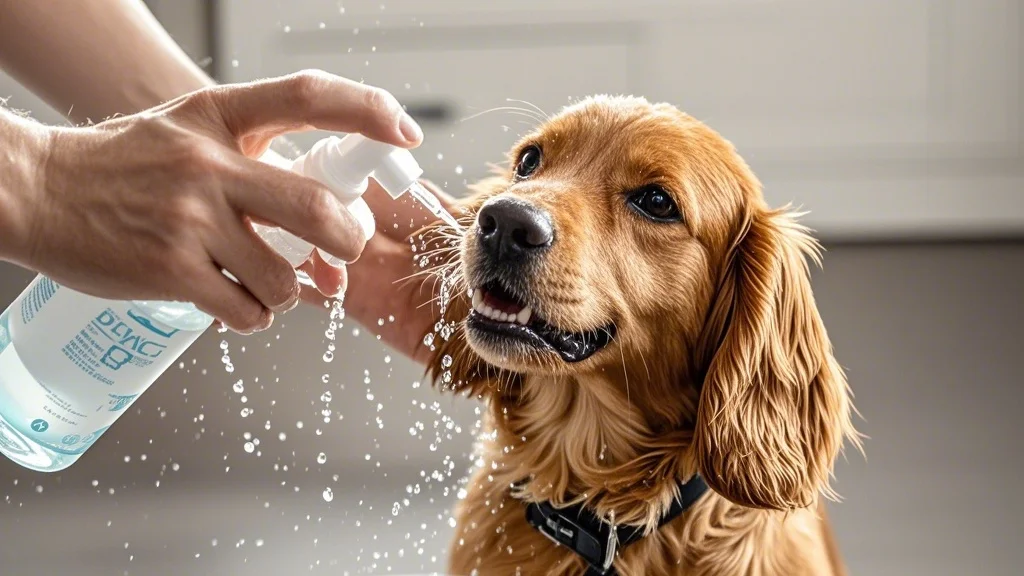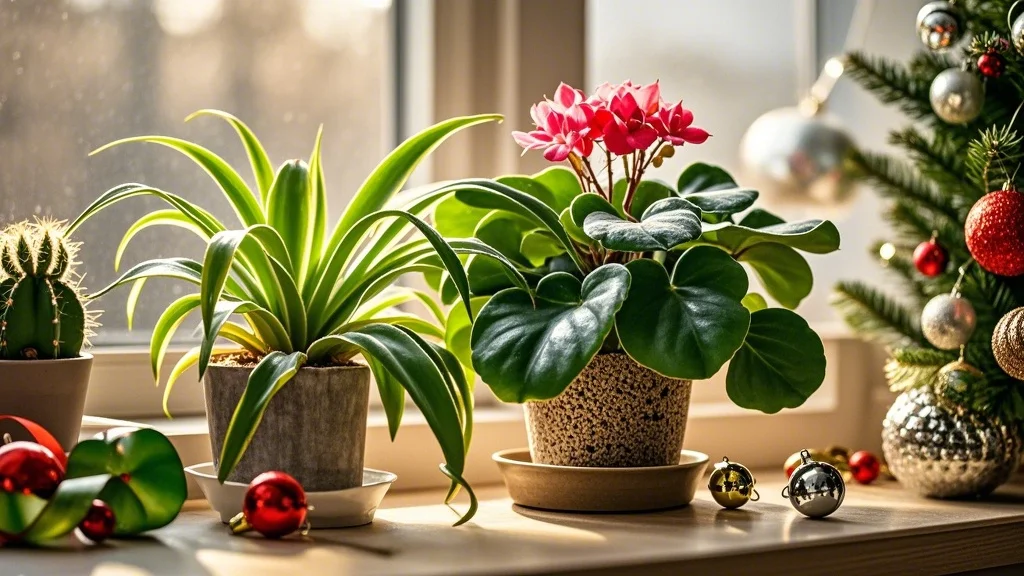As urban gardeners and pet owners, we often find ourselves caught between our love for lush greenery and the safety of our furry companions. The good news is that you don’t have to choose between a thriving indoor garden and a pet-friendly home. This comprehensive guide will introduce you to a variety of beautiful, non-toxic houseplants that are safe for both cats and dogs, allowing you to create a verdant oasis without compromising your pets’ well-being.
Contents
- 1 Why Choose Pet-Safe Plants?
- 2 Top 10 Pet-Safe Houseplants
- 2.1 1. Spider Plant (Chlorophytum comosum)
- 2.2 2. Boston Fern (Nephrolepis exaltata)
- 2.3 3. African Violet (Saintpaulia)
- 2.4 4. Parlor Palm (Chamaedorea elegans)
- 2.5 5. Echeveria
- 2.6 6. Polka Dot Plant (Hypoestes phyllostachya)
- 2.7 7. Peperomia
- 2.8 8. Calathea
- 2.9 9. Christmas Cactus (Schlumbergera)
- 2.10 10. Haworthia
- 3 Creating a Pet-Safe Indoor Garden
- 4 Care Tips for Pet-Safe Plants
- 5 Common Misconceptions About Pet-Safe Plants
- 6 The Benefits of Pet-Safe Plants
- 7 Conclusion
Why Choose Pet-Safe Plants?
Before diving into our list of pet-friendly plants, it’s crucial to understand the importance of selecting non-toxic options:
- Pet Safety: Many common houseplants can be toxic if ingested by cats or dogs, causing symptoms ranging from mild discomfort to severe illness.
- Peace of Mind: Knowing your plants are safe allows you to relax and enjoy your indoor garden without constant worry.
- Versatility: Pet-safe plants come in a variety of shapes, sizes, and care requirements, suiting different home environments and gardening skill levels.
Top 10 Pet-Safe Houseplants

1. Spider Plant (Chlorophytum comosum)
The spider plant is a classic, easy-to-grow houseplant that’s completely safe for pets.
- Appearance: Long, arching leaves with white stripes
- Care Level: Easy
- Light Requirements: Indirect light
- Watering Needs: Allow soil to dry between waterings
- Benefits: Air-purifying, produces “pups” for propagation
2. Boston Fern (Nephrolepis exaltata)
This lush, feathery fern adds a touch of elegance to any room while being safe for curious pets.
- Appearance: Arching fronds with small, delicate leaves
- Care Level: Moderate
- Light Requirements: Indirect light
- Watering Needs: Keep soil consistently moist
- Benefits: Humidifies air, tropical aesthetic
3. African Violet (Saintpaulia)
For a pop of color that’s safe for pets, look no further than the charming African violet.
- Appearance: Small, round leaves with vibrant purple, pink, or white flowers
- Care Level: Moderate
- Light Requirements: Bright, indirect light
- Watering Needs: Water from the bottom, keep soil lightly moist
- Benefits: Year-round blooms, compact size
4. Parlor Palm (Chamaedorea elegans)
This elegant palm brings a tropical feel to your home without posing a risk to your pets.
- Appearance: Feathery fronds on slender stems
- Care Level: Easy
- Light Requirements: Low to bright indirect light
- Watering Needs: Allow top inch of soil to dry between waterings
- Benefits: Air-purifying, tolerates low light conditions
5. Echeveria
These beautiful succulents come in a variety of colors and are safe for pets to be around.
- Appearance: Rosette-shaped leaves in various colors
- Care Level: Easy
- Light Requirements: Bright, direct light
- Watering Needs: Allow soil to dry completely between waterings
- Benefits: Drought-tolerant, low maintenance
6. Polka Dot Plant (Hypoestes phyllostachya)
Add a splash of color to your pet-friendly indoor garden with this vibrant, speckled plant.
- Appearance: Leaves with pink, red, or white spots on green background
- Care Level: Moderate
- Light Requirements: Bright, indirect light
- Watering Needs: Keep soil consistently moist
- Benefits: Colorful foliage, compact size
7. Peperomia
With numerous varieties to choose from, peperomias offer diverse textures and colors while remaining pet-safe.
- Appearance: Varies by species, often with thick, fleshy leaves
- Care Level: Easy to Moderate
- Light Requirements: Moderate to bright indirect light
- Watering Needs: Allow soil to dry between waterings
- Benefits: Compact size, air-purifying
8. Calathea
Known for their striking leaf patterns, calatheas are both beautiful and safe for pets.
- Appearance: Large leaves with intricate patterns and colorations
- Care Level: Moderate to Challenging
- Light Requirements: Indirect light
- Watering Needs: Keep soil consistently moist
- Benefits: Unique foliage, air-purifying
9. Christmas Cactus (Schlumbergera)
This festive plant blooms around the holidays and is safe for pets year-round.
- Appearance: Segmented stems with colorful flowers
- Care Level: Easy
- Light Requirements: Bright, indirect light
- Watering Needs: Allow soil to dry slightly between waterings
- Benefits: Seasonal blooms, long-lived plant
10. Haworthia
These small succulents are perfect for pet owners with limited space or those new to plant care.
- Appearance: Rosette-shaped, often with translucent “windows” on leaves
- Care Level: Easy
- Light Requirements: Bright, indirect light
- Watering Needs: Allow soil to dry completely between waterings
- Benefits: Compact size, drought-tolerant
Creating a Pet-Safe Indoor Garden

Now that you’re familiar with some excellent pet-friendly plant options, here are some tips for creating a thriving indoor garden that’s safe for your furry friends:
- Mix and Match: Combine different textures, sizes, and colors of pet-safe plants to create visual interest.
- Consider Plant Placement: While these plants are non-toxic, it’s still best to place them out of easy reach to prevent damage to the plants themselves.
- Use Pet-Safe Fertilizers: When feeding your plants, opt for organic, pet-safe fertilizers to maintain a non-toxic environment.
- Monitor Your Pets: Even with non-toxic plants, keep an eye on your pets’ behavior around new additions to your home.
- Provide Alternatives: Offer pet-friendly grass or catnip to redirect your pets’ attention from your houseplants.
Care Tips for Pet-Safe Plants
While the plants listed are non-toxic to pets, they still require proper care to thrive:
- Lighting: Most pet-safe plants prefer indirect light. Use sheer curtains to filter bright sunlight if needed.
- Watering: Follow specific watering guidelines for each plant. Generally, it’s better to underwater than overwater.
- Humidity: Many pet-safe plants, especially ferns and calatheas, appreciate higher humidity. Consider using a humidifier or pebble tray.
- Soil: Use well-draining potting mix appropriate for each plant type.
- Pruning: Regularly remove dead or yellowing leaves to maintain plant health and appearance.
- Repotting: As your plants grow, repot them into slightly larger containers with fresh soil every 1-2 years.
Common Misconceptions About Pet-Safe Plants
Let’s address some common myths about pet-friendly houseplants:
- Myth: All succulents are safe for pets. Fact: While many succulents are pet-safe, some popular varieties like aloe vera can be toxic.
- Myth: Pet-safe plants don’t need protection from curious animals. Fact: Even non-toxic plants can be damaged by pets and should be placed thoughtfully.
- Myth: Pet-safe plants are less attractive than toxic varieties. Fact: There are many stunning, varied options for pet-friendly houseplants.
- Myth: You can’t have a lush indoor jungle with only pet-safe plants. Fact: With proper care and selection, you can create a vibrant, diverse indoor garden using only non-toxic plants.
The Benefits of Pet-Safe Plants
Incorporating pet-friendly plants into your home offers numerous advantages:
- Improved Air Quality: Many pet-safe plants, like spider plants and parlor palms, are excellent air purifiers.
- Stress Reduction: Caring for plants can be a relaxing hobby, benefiting both you and your pets.
- Natural Decor: Plants add life, color, and texture to your home decor without the need for artificial elements.
- Educational Opportunity: Growing pet-safe plants can be a great way to teach children about nature and responsibility.
- Increased Humidity: Some pet-friendly plants, like ferns, naturally increase air moisture, benefiting both you and your pets.
Conclusion
Creating a lush, green indoor environment doesn’t have to come at the cost of your pets’ safety. With this comprehensive guide to pet-safe houseplants, you can confidently cultivate a beautiful, thriving indoor garden that’s harmonious with your furry companions. From the graceful arches of a spider plant to the vibrant blooms of an African violet, these non-toxic options offer a wide range of textures, colors, and care requirements to suit any home and gardening skill level.
Remember, while these plants are safe if ingested, it’s still best to monitor your pets and place plants thoughtfully to prevent damage. By choosing pet-friendly plants and following proper care guidelines, you can enjoy the best of both worlds: a stunning indoor oasis and peace of mind knowing your beloved pets are safe.
So go ahead, let your green thumb flourish, and create the indoor garden of your dreams – your pets will thank you for it!









